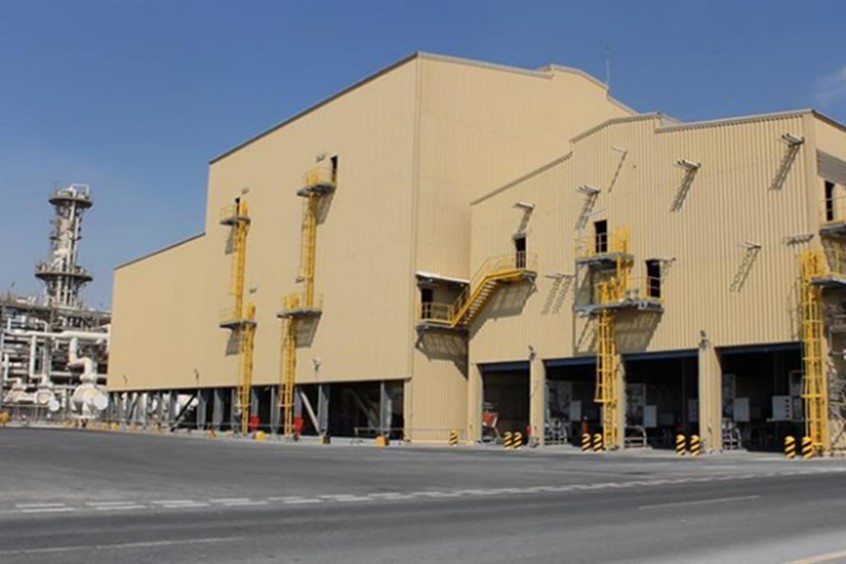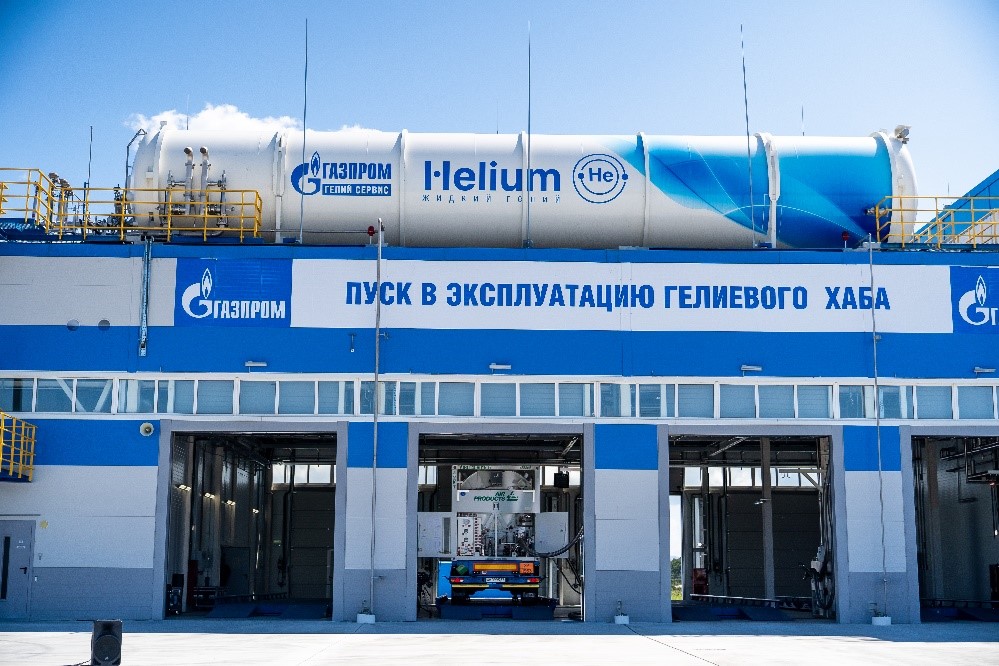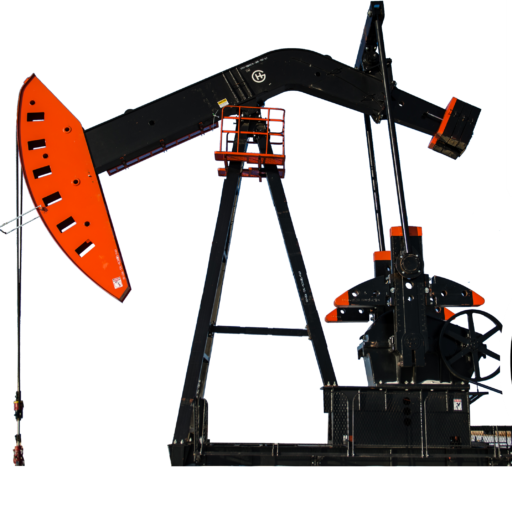From the Garage Files: Steve Halabura is one of Saskatchewan’s leading geologists
Editor’s note: When he’s not contributing to Pipeline Online, Steve Halabura is vice president of exploration of Royal Helium, among other things.
The other day, I was chatting with my friend and colleague John Styles, and Saskatchewan’s Helium Plan came up. John, being a professional engineer, and I, being a professional geologist, both pondered the same question: “Just how much is ten percent of the global helium market anyways, and what does this mean for our beloved Saskatchewan?”
So, being busybodies, we did some figuring and reckoning.
In November 2021, Energy and Resources Minister Bronwyn Eyre announced the Saskatchewan government has set a target for helium production of ten per cent of the global helium market, what I will call from now on the “Ten Per Cent Goal.” What does this mean for our emerging helium sector?
Cormark Securities, in a report of key takeaways from the recent Gasworld Helium Summit, stated the global market for helium is some six billion cubic feet – that’s Bcf, or as stated in our metric world, some 170,000 103m3 (the “103m3” meaning “1,000 cubic meters”).
So, 10 per cent of this is 0.6 Bcf or 17,000 103m3. This is what the Government of Saskatchewan wants its industry to produce by 2030 – this is the Ten Per Cent Goal.
How much is that, and what does it mean for our service and supply sector?
- 0098 SASPO-2874_Self Serve Campaign_New Connects_Youtube_v30098 SASPO-2874_Self Serve Campaign_New Connects_Youtube_v3
- 0100 Turnbull Project Manager0100 Turnbull Project Manager
- 0099 Mryglod Steel 1080p0099 Mryglod Steel 1080p
- 0097 Eagle Sky Ventures LTD0097 Eagle Sky Ventures LTD
- 0095 Fast Trucking nearly 70 years good at it0095 Fast Trucking nearly 70 years good at it
- 0053 Kingston Midstream Westspur Alameda Click Before You Dig0053 Kingston Midstream Westspur Alameda Click Before You Dig
- 0092 Turnbull projects big and small0092 Turnbull projects big and small
- 0046 City of Estevan This is Estevan Teaser0046 City of Estevan This is Estevan Teaser
- 0087 Lori Carr Coal Expansion0087 Lori Carr Coal Expansion
- 0077 Caprice Resources Stand Up For Free Speech0077 Caprice Resources Stand Up For Free Speech
- 0076 Latus only0076 Latus only
- 0061 SIMSA 2024 For Sask Buy Sask0061 SIMSA 2024 For Sask Buy Sask
- 0055 Smart Power Be Smart with your Power office0055 Smart Power Be Smart with your Power office
- 0051 JML Hiring Pumpjack assembly0051 JML Hiring Pumpjack assembly
- 0049 Scotsburn Dental soft guitar0049 Scotsburn Dental soft guitar
- 0041 DEEP Since 2018 now we are going to build0041 DEEP Since 2018 now we are going to build
- 0032 IWS Summer hiring rock trailer music
- 0022 Grimes winter hiring
- 0021 OSY Rentals S8 Promo
- 0018 IWS Hiring Royal Summer
- 0013 Panther Drilling PO ad 03 top drive rigs
- 0006 JK Junior
- 0002 gilliss casing services0002 gilliss casing services
- 9002 Pipeline Online 30 sec EBEX9002 Pipeline Online 30 sec EBEX
- 9001
Let’s look globally first. Cormark pointed to two major projects coming on stream in the next two years. Qatar’s Helium 3 Project is expected to produce 0.3 Bcf and Russia’s Amur Train 1 some 0.7 Bcf per year. Amur Train 2, also designed for 0.7 Bcf per year, is expected to come onstream some time in 2022.
Therefore, to meet the Ten Per Cent Goal, Saskatchewan would have to build two Qatari projects or one Russian “Amur” project. What do these look like?
Qatar’s three helium plants produce 2.6 Bcf per year, about 35 per cent of the world market. The gas is stripped from Qatar’s natural gas production.

A helium facility in Qatar.
Russia’s Amur plant also strips helium from a natural gas stream. Cormark Securities issued a report summarizing key findings from the recent Global Helium Summit held in Houston. Remember, the global helium market is around 6 BCF or 170,000 103m3, and Saskatchewan wants to be at 10 per cent of that market.

What does this look like for Saskatchewan? A useful attachment to the government’s recently released helium report is a table identified as “Appendix 2” that lists Saskatchewan’s historical helium production.
At this point, excluding recent activity by Royal Helium, North American Helium and others, there are 13 active or formerly active (now abandoned) helium production wells located in four helium pools with historical production of 9,095 103m3, or 53 per cent of the Ten Per Cent Goal. The biggest pool, Wilhelm (north of Swift Current) produced 7,000 103m3 from 1963 to 1978, and then again from 2014 to present. The next biggest is Mankota, which has produced 1,400 103m3 since 2016. Two more pools are reported – Battle Creek and Cypress/Consul – which are reported to have produced 682 103m3 in 2021.
The historical helium volume was produced over a 25-year period, so the Saskatchewan helium sector will have to produce about two and a half times its total (25-year) historical helium production per year to meet the Ten Per Cent Goal.
Clearly, major expansion of the helium sector is required.
Another way to look at this is that, if we assume exploration work over the next few years will prove that the anticipated pool size is like Wilhelm, and if we assume a linear decline of helium production per each such Wilhelm-sized pool, then the average annual helium production is 283 103m3 per pool. Therefore, to achieve the annual production rate, Saskatchewan will need 17,000/283 or 25 Wilhelm-sized pools to meet the Ten Per Cent Goal.
To meet the above production requirement, about 150 production wells will be required, and if we assume a 50 per cent success rate during the initial exploration period, this means 300 wells will be required to achieve the Ten Per Cent Goal over the next few years. Also, since a linear goal is not reality, and we assume a 10 per cent decline per year, the helium sector will have to add another Wilhelm per year to sustain production – perhaps 10 to 12 wells per year.
Since helium is co-produced with inert gas, mainly nitrogen, at an average grade of one per cent, historical total gas (inert and helium) produced is some 700,000 103m3. Saskatchewan produced 1,232,000 103m3 of natural gas from gas wells (not counting gas co-produced with oil) in 2020, so the helium sector will have to produce a volume of inert and helium gas at least double the historical rate, which is a bit more than Saskatchewan’s annual natural gas production.
- 0098 SASPO-2874_Self Serve Campaign_New Connects_Youtube_v30098 SASPO-2874_Self Serve Campaign_New Connects_Youtube_v3
- 0100 Turnbull Project Manager0100 Turnbull Project Manager
- 0099 Mryglod Steel 1080p0099 Mryglod Steel 1080p
- 0097 Eagle Sky Ventures LTD0097 Eagle Sky Ventures LTD
- 0095 Fast Trucking nearly 70 years good at it0095 Fast Trucking nearly 70 years good at it
- 0053 Kingston Midstream Westspur Alameda Click Before You Dig0053 Kingston Midstream Westspur Alameda Click Before You Dig
- 0092 Turnbull projects big and small0092 Turnbull projects big and small
- 0046 City of Estevan This is Estevan Teaser0046 City of Estevan This is Estevan Teaser
- 0087 Lori Carr Coal Expansion0087 Lori Carr Coal Expansion
- 0077 Caprice Resources Stand Up For Free Speech0077 Caprice Resources Stand Up For Free Speech
- 0076 Latus only0076 Latus only
- 0061 SIMSA 2024 For Sask Buy Sask0061 SIMSA 2024 For Sask Buy Sask
- 0055 Smart Power Be Smart with your Power office0055 Smart Power Be Smart with your Power office
- 0051 JML Hiring Pumpjack assembly0051 JML Hiring Pumpjack assembly
- 0049 Scotsburn Dental soft guitar0049 Scotsburn Dental soft guitar
- 0041 DEEP Since 2018 now we are going to build0041 DEEP Since 2018 now we are going to build
- 0032 IWS Summer hiring rock trailer music
- 0022 Grimes winter hiring
- 0021 OSY Rentals S8 Promo
- 0018 IWS Hiring Royal Summer
- 0013 Panther Drilling PO ad 03 top drive rigs
- 0006 JK Junior
- 0002 gilliss casing services0002 gilliss casing services
- 9002 Pipeline Online 30 sec EBEX9002 Pipeline Online 30 sec EBEX
- 9001
My “back-of-envelope” estimate is that to achieve the Ten Per Cent Goal, the province will need the discovery and exploitation of 25 Wilhelms to start, with the sector being equal in size to the province’s 2020 historical natural gas production from gas wells. As a geologist who has studied the inert gas potential of southern Saskatchewan, there are more than enough potential structures to provide this resource base.
Over the next several years, 300 or so new wells are required. Given 1,200 wells drilled in 2020, helium drilling could range from 10 per cent to 25 per cent of total drilling in the province. Since these are deep wells costing about $1.5 million to drill and complete, this requires an investment of about half a billion dollars. This volume of helium production will require several processing and liquefaction facilities, so let’s add another billion dollars for processing infrastructure. This means the province should see an investment of $1.5 billion over the near term.
To put this in perspective, in 2017 Crescent Point, in their operations heyday, spent $1.8 billion drilling 794 wells, employing 16 rigs in the process and was the most active driller in Canada at the time. The Helium Action Plan requires the helium sector to match this, which is not an unrealistic expectation.
The Ten Per Cent Goal is realistic, and I do not see why the emerging helium sector can’t achieve this. After all, Saskatchewan helium has three huge advantages that Qatari or Russian helium lacks:
- Saskatchewan helium is green – it is co-produced with an inert gas, nitrogen. The nitrogen can either be vented or be utilized to make ammonia or fuel-grade urea;
- Saskatchewan is a friendly political jurisdiction – the Ministry of Energy and Resources has consistently shown it is accessible, open to industry consultation, and scrupulously fair in its dealings with explorers and producers; and
- Saskatchewan has a fully developed service and supply sector capable of drilling required wells.
The sector faces challenges in meeting the Ten Per Cent Goal. First, the helium resource is associated with deep structures which are very much a “frontier” geological domain. While there are tens of thousands of wells drilled in the southwest, the number of deep tests has only recently broken the 100 mark. Second, all the infrastructure must be built, including liquefaction facilities. Third, significant investment capital is required since the sector is starting pretty much from scratch.
Helium will play out just like previous booms, like oil in this province. In 1946, Imperial pulled out, but then in 1948 and 1949 a huge land rush developed, and five years later, the exploration work yielded many of the southeast and southwest oil pools we still produce today.
Potash was no different. The first boom in 1947, brought three mines, then again, the second in the 1960s another five. The last, in 2005, brought in two more. The most recent mine, Jansen, is some $8 billion. That is a lot of coin!
During each of those early-stage booms, someone complained the provincial government “gave the peoples‘ land away” by issuing permits at cheap rates, as some complain today. However, it’s a great strategy if you are a landlord and want to get your assets generating rent. You don’t make money on the initial lease; you make it on the decades of risk-free rent (or royalty) that follows.
New discoveries will be made as our knowledge of the deep frontier expands, and this will lead to several “big strikes.”
A helium infrastructure, including one or two helium liquefaction facilities, will be built. In five years, the sector could be as significant a contributor to the province’s economy as its free-standing natural gas industry is today.
The runway is set up. Now it’s up to our entrepreneurs and industry leaders to “get It built!”
Steve Halabura is a professional geologist whose work over the years includes potash, oil, natural gas and helium. He can be found on LinkedIn at https://www.linkedin.com/in/steve-halabura-a715461b/
- 0098 SASPO-2874_Self Serve Campaign_New Connects_Youtube_v30098 SASPO-2874_Self Serve Campaign_New Connects_Youtube_v3
- 0100 Turnbull Project Manager0100 Turnbull Project Manager
- 0099 Mryglod Steel 1080p0099 Mryglod Steel 1080p
- 0097 Eagle Sky Ventures LTD0097 Eagle Sky Ventures LTD
- 0095 Fast Trucking nearly 70 years good at it0095 Fast Trucking nearly 70 years good at it
- 0053 Kingston Midstream Westspur Alameda Click Before You Dig0053 Kingston Midstream Westspur Alameda Click Before You Dig
- 0092 Turnbull projects big and small0092 Turnbull projects big and small
- 0046 City of Estevan This is Estevan Teaser0046 City of Estevan This is Estevan Teaser
- 0087 Lori Carr Coal Expansion0087 Lori Carr Coal Expansion
- 0077 Caprice Resources Stand Up For Free Speech0077 Caprice Resources Stand Up For Free Speech
- 0076 Latus only0076 Latus only
- 0061 SIMSA 2024 For Sask Buy Sask0061 SIMSA 2024 For Sask Buy Sask
- 0055 Smart Power Be Smart with your Power office0055 Smart Power Be Smart with your Power office
- 0051 JML Hiring Pumpjack assembly0051 JML Hiring Pumpjack assembly
- 0049 Scotsburn Dental soft guitar0049 Scotsburn Dental soft guitar
- 0041 DEEP Since 2018 now we are going to build0041 DEEP Since 2018 now we are going to build
- 0032 IWS Summer hiring rock trailer music
- 0022 Grimes winter hiring
- 0021 OSY Rentals S8 Promo
- 0018 IWS Hiring Royal Summer
- 0013 Panther Drilling PO ad 03 top drive rigs
- 0006 JK Junior
- 0002 gilliss casing services0002 gilliss casing services
- 9002 Pipeline Online 30 sec EBEX9002 Pipeline Online 30 sec EBEX
- 9001
This is Part 9 in a series regarding helium development in Saskatchewan.
